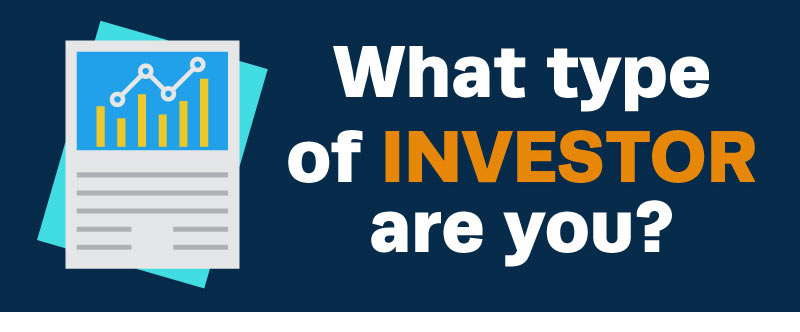I Trust These Market Indicators Over Wall Street Any Day
What if I told you most of Wall Street’s investment research was next to worthless?
The purpose of the detailed analysis of the economy… business cycle… and market outlook is to give you an “edge.”
And that edge is to maximize your investment returns.
But should we be surprised that Wall Street research consistently fails to live up to expectations?
After all, the failure of epidemiological models to predict the spread of the COVID-19 virus has hammered home a lesson that we won’t soon forget: Experts often fall woefully short in making accurate predictions.
Click here to watch Nicholas’ latest video update.
Lucky for us, in the world of investing, there is an alternative.
Market sentiment indicators are far better predictors of investment returns than the elaborate financial models offered by the Goldman Sachs and Morgan Stanleys of the world.
A trio of researchers in the United Kingdom proved that as long ago as 2006.
Sentiment indicators offer you a provable edge in generating higher investment returns.
And below, I’ll reveal how I use a popular, free and readily available measure of market sentiment in my own investing.
Why Market Sentiment Trumps Economic Analysis
Reading academic papers is a lot like stirring concrete with your eyelashes.
Teasing out useful insights is no small task.
But that is precisely what I did with an academic paper I recently came across.
It was titled “When to Pick the Losers: Do Sentiment Indicators Improve Dynamic Asset Allocation?”
Here’s a quick summary of what the researchers found.
They start with the premise that investors make systematic – and predictable – errors when they bet on future stock prices and other assets.
(I’ve written about investors’ most common “cognitive biases” in the past.)
The researchers examined a topic almost uniformly ignored by their fellow academics: the impact of market sentiment indicators on investment returns.
They compared investor sentiment as measured by a component of the University of Michigan Consumer Sentiment Index on the one hand…
With traditional Wall Street macroeconomic and business cycle analysis on the other.
Their conclusions dealt a blow to research departments both on and off Wall Street.
As it turns out, traditional macroeconomic analysis improved investment performance “only marginally.”
In contrast, market sentiment indicators “had a much more dramatic effect” on improving the performance of actively managed portfolios.
So what explains the success of market sentiment indicators largely ignored by Wall Street?
Sentiment indicators systematically exploited investor overreaction to time the market.
(Benjamin Graham famously called these overreactions “Mr. Market’s Mood swings.”)
Most importantly, sentiment indicators allowed investors to stay out of the market at crucial times.
The researchers found that sentiment-based, dynamic trading strategies would have lost little money during historic market sell-offs.
These sell-offs include the October 1987 crash and the collapse of the dot-com bubble in late 2000.
Put another way, sentiment indicators not only help you make money…
But also keep you from losing it.
How I Use Market Sentiment Indicators
The U.K. academic study I cited here focused on the University of Michigan Consumer Sentiment Index.
But fast-forward 15 years…
And there’s an even better set of market sentiment indicators.
And that is the CNN Fear & Greed Index.
A composite of seven underlying indicators, the CNN Fear & Greed Index gives you a quick overview of market sentiment.
I look at it every day.
After the market close on August 17, it suggests that the market is in “greed” mode.

This signals that investors are more bullish than bearish.
How do I use the CNN Fear & Greed Index in my investing?
Once the indicator enters “extreme greed” – say, about 80 or above – I will never buy a stock.
Once the indicator gets above 90, I start to position myself for a market pullback.
I may even sell S&P Futures in an attempt to profit from the looming pullback.
If the indicator falls below 20, then I do the opposite. I start looking at positions I want to add to.
Since I have been tracking the indicator, I have seen it drop to zero on half a dozen occasions.
In every instance I can recall, this extreme turned out to be a terrific time to buy.
The bottom line?
Wall Street research can be both impressive and overwhelming.
But it is far less useful than most investors think.
That’s why I ignore most of it in favor of tested and true market sentiment indicators.
As Warren Buffett puts it…
Be fearful when others are greedy and greedy when others are fearful.
The CNN Fear & Greed Index is an easy way to help you do just that.
About Nicholas Vardy
An accomplished investment advisor and widely recognized expert on quantitative investing, global investing and exchange-traded funds, Nicholas has been a regular commentator on CNN International and Fox Business Network. He has also been cited in The Wall Street Journal, Financial Times, Newsweek, Fox Business News, CBS, MarketWatch, Yahoo Finance and MSN Money Central. Nicholas holds a bachelor’s and a master’s from Stanford University and a J.D. from Harvard Law School. It’s no wonder his groundbreaking content is published regularly in the free daily e-letter Liberty Through Wealth.







